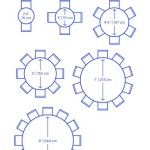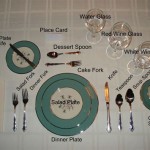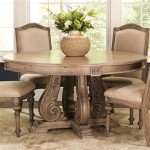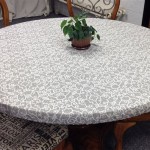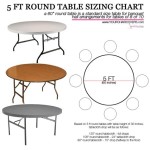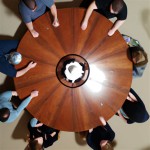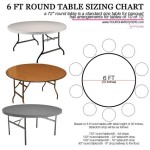What is the Seating Plan for the Top Table at a Wedding?
The top table at a wedding reception serves as a focal point, drawing attention to the key individuals who have supported the couple during their journey towards marriage. Its arrangement and the people seated there are steeped in tradition, evolving to accommodate modern family dynamics and personal preferences. Understanding the traditional etiquette and contemporary alternatives is crucial for crafting a seating plan that honors relationships and ensures a comfortable and celebratory atmosphere for all involved.
Traditionally, the top table comprises the bride and groom, their parents, and possibly the best man and maid of honor. The precise arrangement and inclusion of specific individuals are determined by factors such as family structure, relationship dynamics, and individual preferences. The primary goal is to create a configuration that reflects the significance of those seated while fostering a convivial atmosphere.
The traditional placement adheres to a specific order. The bride and groom typically occupy the central positions, symbolizing their union and central role in the celebration. The mother of the bride is traditionally seated to the left of the groom, while the father of the groom is seated to the right of the bride. This places the parents of the couple closest to them, signifying their support and guidance. Following the parents, the father of the bride sits next to the mother of the groom, and finally the mother of the groom sits next to the father of the bride. Then the bridesmaids and groomsmen are seated at the end of the table. However, these rules are broken quite frequently nowadays.
Variations on the Traditional Top Table
Modern weddings frequently deviate from the traditional top table structure to reflect contemporary family structures and personal preferences. Divorced parents, blended families, and close friends often necessitate alterations to the seating arrangements. Here are some common variations:
One common modification involves the inclusion of stepparents. If the bride's or groom's parents are divorced and remarried, consider including stepparents at the top table. The decision of whether to include stepparents depends on their relationship with the couple and the dynamics of the families involved. Open communication and sensitivity are essential when navigating these complexities.
Another increasingly popular alternative is to forego the traditional top table altogether. Some couples opt for a "sweetheart table" where they sit alone, allowing them to enjoy some private moments together amidst the celebration. This arrangement also frees up seating for other guests and eliminates potential awkwardness arising from complex family dynamics.
A further variation involves including the wedding party, such as bridesmaids and groomsmen, along with their partners. This creates a more relaxed and informal atmosphere and allows the wedding party to feel more integrated into the celebration. This arrangement often requires a larger table or multiple tables to accommodate all the guests.
When considering variations to the traditional top table, it is crucial to prioritize open communication and sensitivity. Discuss the seating arrangements with family members and close friends, taking their feelings and preferences into account. Transparency and understanding can help prevent hurt feelings and ensure that everyone feels valued and appreciated.
Ultimately, the best top table arrangement is one that reflects the unique dynamics of the couple's family and relationships, and contributes to a joyous and memorable celebration.
Factors to Consider When Planning the Top Table
Several factors should be considered when planning the top table seating arrangement. These factors range from family dynamics to venue constraints, and addressing these considerations upfront can contribute to a smoother and more enjoyable wedding reception.
First and foremost, consider the family dynamics. Are there any potential conflicts or sensitivities between family members that need to be addressed? If divorced parents are attending, consider their relationships with each other and with the couple. If stepparents are involved, consider their relationships with the couple and with the biological parents. Open communication and sensitivity are essential when navigating these complexities.
Second, consider the venue layout and table size. The size and shape of the top table will influence the number of people who can be seated comfortably. Ensure that the table is large enough to accommodate all the intended guests without feeling overcrowded. Also, consider the table's location within the room and its proximity to the dance floor, speakers, and other key elements of the reception.
Third, consider the preferences of the bride and groom. The top table is ultimately about honoring the couple and their closest relationships. Their preferences should be prioritized when making decisions about the seating arrangement. Discuss their vision for the top table and any specific individuals they wish to include or exclude.
Fourth, consider the overall atmosphere you wish to create. Do you want a formal and traditional atmosphere, or a more relaxed and informal one? The top table arrangement can contribute to the overall tone of the reception. A traditional top table with parents and wedding party may convey a more formal atmosphere, while a sweetheart table or a table with close friends may convey a more relaxed atmosphere.
Fifth, be sure to communicate the seating plan clearly to the venue staff and caterers. This will ensure that they can set up the table correctly and provide appropriate service to the guests seated there. Provide a detailed seating chart and any specific instructions regarding dietary restrictions or other special needs.
By carefully considering these factors, you can create a top table seating plan that is both functional and meaningful, contributing to a memorable wedding reception for the couple and their guests.
Alternative Seating Arrangements: Beyond the Traditional Top Table
While the traditional top table is a common fixture at weddings, many couples are opting for alternative seating arrangements that better reflect their personal style and preferences. These alternatives offer flexibility and can create a more inclusive and relaxed atmosphere for the reception. Several innovative options are gaining popularity.
One such option is the "sweetheart table," where the bride and groom sit alone at a small, intimate table. This arrangement allows the couple to enjoy some private moments together amidst the wedding festivities. It also eliminates any potential awkwardness arising from complex family dynamics. The sweetheart table provides a focal point for the reception while allowing the couple to share special moments. This is particularly appealing for couples who want an opportunity to connect with one another during the busy celebration.
Another popular alternative is to host a "head table" that includes the entire wedding party, including bridesmaids, groomsmen, and their respective partners. This creates a more inclusive and celebratory atmosphere, allowing close friends to share in the special occasion. The head table typically requires a larger table or multiple tables to accommodate all the guests. This arrangement is well-suited for couples who have a close-knit group of friends and want to celebrate together.
A third option is to skip the formal top table altogether and have the bride and groom circulate among the guests throughout the reception. This allows them to spend quality time with each of their guests and create a more interactive and engaging atmosphere. This approach works particularly well for smaller weddings where the couple can easily mingle with all of the attendees. Rather than being confined to a specific table, the couple is actively engaged with their guests, creating a more personal and memorable experience for everyone involved.
Another emerging trend involves having the bride and groom sit at a regular table with family members or close friends. This approach promotes a more informal and intimate atmosphere. It allows the couple to blend in with their guests and engage in relaxed conversation. This option is suitable for couples who want to create a more casual and approachable vibe at their wedding reception. This arrangement underscores the importance of relationships and creates a sense of inclusivity.
Ultimately, the best alternative seating arrangement is one that reflects the unique style and preferences of the couple. By considering these alternatives, couples can create a wedding reception that is both memorable and meaningful for themselves and their guests. Careful consideration and open communication are crucial when making these decisions. The goal is to create an atmosphere that celebrates love and togetherness in a way that feels authentic and personal.

The Wedding Top Table Layout

Arranging Your Wedding Seating Plan And Top Table

Wedding Top Table Seating Arrangements Aby Joanne Photography

Wedding Top Table Layout Guide The Brewery

Wedding Top Table Seating Arrangements Aby Joanne Photography

9 Tips To Get Your Wedding Seating Plan Right Venue Experts

Wedding Top Table Diffe Arrangements

Arranging Your Wedding Seating Plan And Top Table

Wedding Etiquette Who Sits At The Bridal Table

Best Laid Plans Seating Made Easy Little White Books
Related Posts

